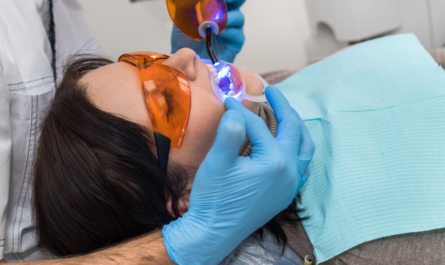Sponsored Content: Henry Schein One
Henry Schein One’s practice management software helps improve efficiency and increase revenues through standardization of data
The recipe for success when expanding a dental practice to multiple locations and increasing profitability is centralizing practice management software and practice operations. Standard operating procedures (SOPs) are essential for operating team to create consistency and predictability throughout the organization. SOPs assist in capturing the best practices from one location and implement them across an entire organization. They provide consistency that keeps workflow stable through growth.
“SOPs are the foundation of running a successful business,” said Karina Santos, Strategic Customer Success Manager of Henry Schein One. “[They are essentially] instructions for your staff on how you would like to operate a certain workflow or piece of the business.”
There are a variety of SOPs, including scheduling SOPs, front office patient check-in and checkout SOPs, and other procedures in between. But always keep in mind who the target audience is for an SOP. Existing team members will be brought up to speed and aligned on new procedures, and new employees will be trained on them. Keep SOPs relevant to the job, instead of making them specific to a person, by referring to a job title not a name for who performs a task.
Technology’s Role in Standardization
Practice management software should play a crucial role in an organization’s standardization. For example, Henry Schein One’s Dentrix® Ascend® and Dentrix® Enterprise™ platforms standardize workflow for each team member with a daily task list to make sure important tasks don’t fall through the cracks. They have best practices built in. As team members follow standard workflows, a multisite organization will begin to see higher efficiency rates across its practices.
By using Henry Schein One’s multi location practice management systems, an organization can standardize data, consolidate nonsupport functions, and establish SOPs. These all help increase efficiencies that can increase profitability.
These efficiencies multiply as an organization grows. SOPs are valuable for groups with standardized processes in place. These groups need practice management software that scales with them and supports standardized workflows across multiple locations.
SOPs are living documents that need to be updated periodically. “Get regular training on your software tools and new features,” Santos said. “Then document that your team completed the training. Create a one-page ‘cheat sheet’ that reminds employees of the process.”
Changing suppliers, implementing a new practice management system or adding innovative technology can all be examples of changes to track when an organization grows. SOPs should be examined quarterly or reexamined when new software features are released. Set a recurring task reminder to revisit SOPs and update them, as necessary.
A Centralized Database and the Digital Transformation
A centralized database allows standardization of records and data. Centralizing and standardizing data is critical to business success for a multisite organization. Data is at the center of every DSO through the acceleration of the digital transformation. Anyone who runs a dental business with growth in mind should use data to make the most important decisions for the future of their organization, but many don’t know where to start. The rise of technologies like Dentrix® Enterprise™ and Dentrix® Ascend® give high-growth DSOs access to high-volume, high-velocity and a wide variety of data. This makes a data analytics platform a requirement for operating in today’s competitive dental market.
For years, dental organizations have been collecting and analyzing data to gain strategic advantages, but this is no longer enough. Today, DSOs could easily leverage their massive datasets to identify new opportunities, discover hidden ones, and optimize operations to drive revenue and growth. To gain a competitive advantage, DSOs will need to pursue a novel approach to data that gives their team what they need, when and where they need it, in a format that delivers actionable insights – not merely information or data presented in a dull spreadsheet.
DSOs that quickly extract usable, accurate insights from their record keeping stand to gain a competitive edge. However, privacy laws like HIPAA and outdated systems have made it difficult to connect disparate data sources that can reveal useful patterns and trends.
Jarvis Analytics, a dental analytics software company, can connect those sources. It simplifies the collection of data from multiple sources and organizes it so the information can be presented in real-time reports, dashboards and other methods.
“Data mining is the new vehicle for accelerating dental business growth,” said Mike Baird, Chief Executive Officer of Henry Schein One. “Practice owners and dental management teams can make better decisions to improve efficiency, increase revenue and maintain clinical excellence.”
Jarvis Analytics works with more than 10 practice management systems, including Dentrix®, Dentrix® Ascend® and Dentrix® Enterprise™. Their analytics tools are integrated into select Henry Schein One practice management systems, delivering one digital workflow aimed to simplify management and improve business performance.





